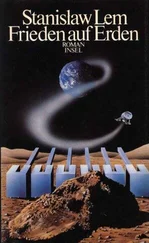They shot me into orbit on the 27th of October, wrapped in sensor tape like an infant in swaddling clothes. From a height of four hundred miles I observed Mother Earth and could hear the engineers at the base cheering that this time it worked. My first stage, the main booster, separated as it was supposed to, above the Atlantic, on the dot, but the second got stuck and I had to help it. I think it fell in the Andes. After the traditional good lucks and safe trips I took over the controls myself and proceeded through the most hazardous zone on the way to the moon. You have no idea how many old satellites, civilian and military, are circling Earth. Something like eighteen thousand not counting the ones that have come apart, particularly dangerous because the pieces are almost too small for radar. And then there’s a lot of ordinary garbage in space, all kinds of waste products, especially radioactive, deposited here by jet. So I flew with extreme caution until space was properly empty. Only then did I unbuckle all the belts and start checking my LEMs.
I turned on one after the other, seeing how each felt, seeing the interior of the bay through its crystal eyes. I had nineteen remotes, but the last one was by itself in a crate marked fruit juice to fool unauthorized persons. Inside the crate was a hermetically sealed cylinder, light blue, which housed a powdered remote, Professor Lax-Gugliborc’s top-secret creation, and I was to use it only as a last resort. I knew the principle of its operation but still don’t know whether I should reveal that yet. Nor do I want to turn this account into a Gynandroics catalog or a product list of the Lunar Agency’s teleferic division. LEM 5 started shivering when I turned it on. Since it was feedback-connected to me, I shivered too, as in a fever, teeth chattering. I was supposed to inform the base at once about such defects, but I didn’t because I knew from experience what would happen. They would immediately call in a whole army of mechanics, designers, engineers, and specialists in electronic pathology, who would be angry with me for making such a big deal out of light convulsions that might go away by themselves, and they would give me contradictory instructions, connect this, disconnect that, and how many amps to zap the poor thing with because electroshock can help machines as well as people. And that would produce some new, unpredicted response, and they would tell me to wait patiently while they ran simulations of the LEM, analog and digital, and of me too, as they argued with each other constantly and now and then told me to stay calm. The team would split into two or three camps like distinguished doctors in consultation. Perhaps they would have me climb into the bay with tools and open the LEM’s belly and train the hand camera on it since all the circuitry is there and not in the head which hasn’t room. So I’d be following the baton of the experts, and if it worked, they’d take the credit, and if it didn’t, I’d get the blame.
But I was 100,000 miles from Earth now and increasingly glad I had kept quiet about the problem, because soon there would be more than a second’s delay in communicating with the base and I’d be sure to bust something, precise movements are difficult when you’re weightless, a spark would tell them I’d caused a short, and then there would be a chorus of sour remarks. Tichy’s screwed it up, they’d say, there’s nothing we can do. So I had spared both them and myself that aggravation.
The nearer I got to the moon, the more unnecessary the advice and cautions I was receiving over the radio, until finally I said that if they didn’t stop bothering me, I’d turn the damned thing off. I knew the moon like the palm of my hand from the days when they were considering turning it into a Disneyland. I circled it three times in high orbit and over the Oceanus Procellarum began a slow descent. On one side I could see the Mare Imbrium and on the other the crater Eratosthenes, then Murchison and the Sinus Medi all the way to the Mare Nubium. I was now so low that the continuation of the moon’s pock-marked surface was hidden from me. I was at the lower boundary of the Zone of Silence. So far nothing unexpected had happened if you don’t count the two empty beer cans that came to life during my maneuvers. When I braked, the cans — as usual discarded in haste by our technicians — manifested themselves and began flying around the cabin, hitting the walls and my head. A greenhorn would have tried to catch them. I changed orbit and flew above the Taurus mountains. When the great Sea of Serenity stretched out before me, I was hit in the back of my helmet so sharply that I jumped. It was a tin of salted crackers that probably had gone with the beer. The base heard the noise and immediately there were questions, but I lied, explaining that I had tried to scratch my head and forgot both helmet and bulky glove. No point in getting the technicians in trouble. They always leave stuff in rockets. It’s like a law of nature.
I flew through the zone of internal control without difficulty, because its satellites had been told by Earth to let me pass. It wasn’t in the program, but I braked hard a few times to dislodge any other mementos from the assembly-and-inspection crews. A comic book stuffed in the reserve selenography drawer fluttered out like an enormous moth. Taking a quick inventory — two beer cans, a cracker tin, a comic book — I concluded that there would be more surprises in store and I would have to stay alert.
I surveyed the moonscape through twenty-power binoculars, but it looked lifeless, uninhabited, empty. I knew that the computer arsenals in the different sectors were a good hundred feet below sea level, sea level meaning those great plains created long ago by lava flows. The arsenals had been set so deep to protect them from meteors. Nevertheless I looked with particular care at the Mare Vaporum, the Mare Tranquillitatis, and the Mare Fecunditatus (the old astronomers who named these plains of stone had some imagination), then circled the Mare Crisium and the Mare Frigoris, thinking I might see a little movement there. I had excellent binoculars and could count the gravel on the slopes of the craters, or at least rocks the size of a person’s head, but nothing stirred and that was what intrigued me. Where were those legions of armed robots, hosts of intelligent tanks, steel giants and equally death-dealing Lilliputians which had been constantly spawning for years beneath the surface? I saw nothing but stones and craters ranging from very large to small as a plate, trenches in the shiny ancient magma radiating out from Copernicus, the Huygens fault, the pole, Archimedes toward Cassini, Plato on the horizon, and everywhere the same incomprehensible desolation. Along the meridian marked by Flamsteed, Herodotus, and Rümker and through the Sinus Roris ran the widest strip of the no man’s land, and that was where I was supposed to land the first remote after putting the ship into selenosynchronous orbit. They hadn’t given me an exact spot; I was to decide that myself, choosing the safest place. Though there was no indication here, none whatever, of safety or danger. To go into selenosynchronous orbit I had to ascend, and maneuvered and maneuvered until the whole enormous sunlit moon below me stopped moving, at which point I was directly over Flamsteed, a very old crater, shallow and almost filled with volcanic tuff. I hung there a while, maybe half an hour, looking down at the rubble and deliberating.
The remotes didn’t need rockets to land. They had little braking nozzles on their legs, and gyroscopes. I could take one down at any speed I liked, using the leg jets, which could be kicked off easily after touching down, the jets and the empty fuel tank. From that moment on the remote was forever moonbound, unable to return. It was neither robot nor android, having not a thought in its head; it was, rather, a tool, an extension of me, incapable of the least initiative. And yet I was uncomfortable thinking that no matter what the outcome of my reconnaissance it was doomed, because I would have to leave it behind in this dead wilderness. It even occurred to me that maybe LEM 7 had faked its malfunction to get out of this in one piece. A ridiculous thought, because I knew perfectly well that Number 7, like all the other LEMs, was but a man-shaped shell. But this gives you some idea of my state of mind.
Читать дальше












